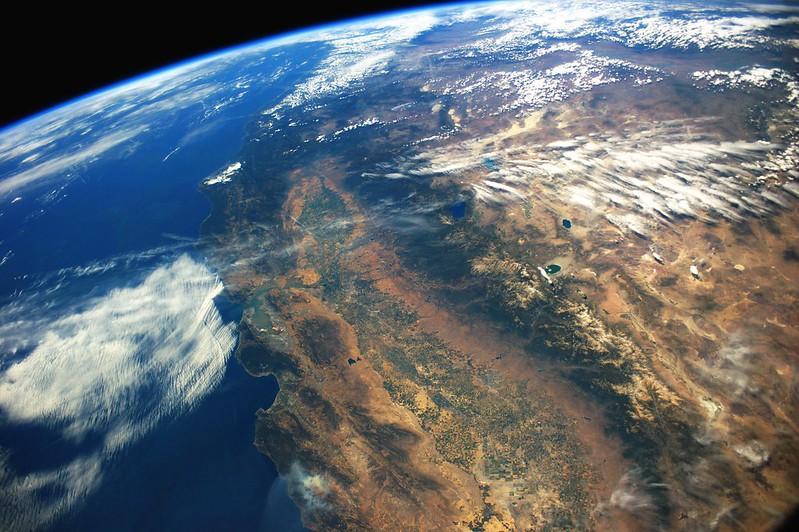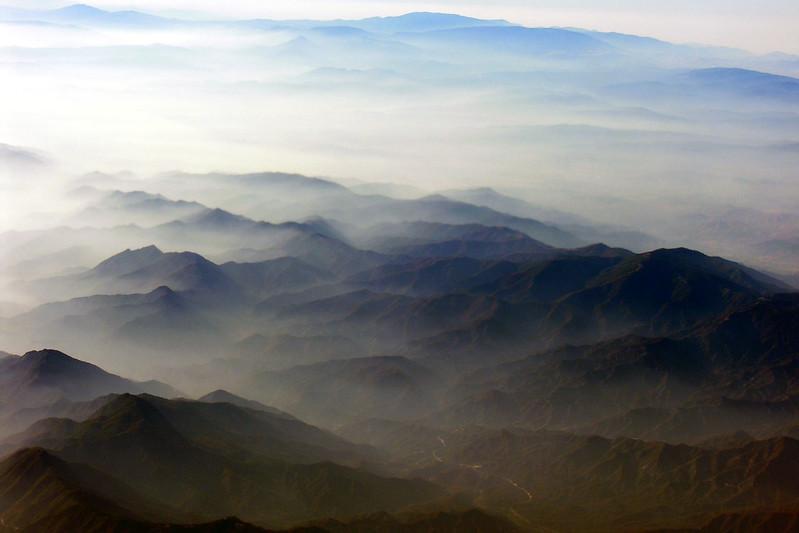It is essential for a healthy garden to have both nutrients and organic matter in the soil. If plants are not thriving, it may be because the soil’s nutrients are low, imbalanced, or even excessive. Being knowledgeable about the soil in your garden can result in the growth of robust plants and more effective management of resources. In this article, we will discuss what is the most fertile soil in the world.

Healthy plants and a healthy garden start with healthy soil.
Fertility in soil refers to a soil’s capacity to encourage healthy plant growth and maximize crop yield. Applying inorganic and organic fertilizers to the ground can help this process. However, some gardeners only want to use natural soil that comes from some of the most fertile areas on the planet.
So, if you are one of them, continue reading to learn about the most fertile lands in the world and where you can find them.
Places With The Richest Soils In The World
Although it is difficult to tell with absolute certainty which type of soil is the most productive, there are several locations across the globe that have exceptionally fertile soils. Most of the richest soils have one thing in common: they were produced beneath grasslands.
These soils have relatively high levels of ammonia, phosphorus, and humus. Also, they have a great capacity for retaining water in most cases.
Let’s discuss these locations one by one.
1. Eastern Europe & Southern Russia – Chernozem

Chernozem soil on limestone in Voronezh region, Russia
Eastern Europe and Southern Asia are rich in a soil type known as Chernozem. It is a highly fertile soil with a great capacity for retaining water, enabling it to produce excellent agricultural output.
The name “Chernozem” comes from a combination of two Russian words: “Chernaya,” which translates to “black,” and “Zemlya,” which refers to the earth. This type of soil is dark in color and has a high percentage of humus (between 4 and 16 percent) and high percentages of phosphoric acids, phosphorus, and ammonia.
According to the statistics provided by the Food and Agriculture Organization of the United Nations, it only takes up 1.8% of the total land area on the planet.
The first belt may be found on the Eurasian Steppe and extends throughout the borders of several different countries, including Croatia, Romania, Ukraine, Russia, and Bulgaria.
While the second belt is in North America, it encompasses the Great Plains and can be found all the way from Kansas in the United States to Manitoba in Canada. There are pockets of chernozem soil that can be several inches deep in the Red River Valley.
Chernozem can be found in a wide range of soil types. However, it is most commonly found in loams and other heavy soil types. Large portions of Chernozem are situated on several geological formations, including lime markings, limestone, basalt, granite, sandstones, and others.
Related: What Are The Little White Things in Plant Soil 8 Ways to Get Rid of Pests?
2. Mesopotamia – Fertile Crescent

Map depicting the roughly defined boundaries of the “Fertile Crescent” (green).
The Fertile Crescent is an area in the Middle East that is in the shape of a boomerang and was the location of several early human civilizations.
The presence of fertile soil in the area close to these rivers led to the development of agriculture and irrigation here. Having access to water facilitated cultivation as well as trading routes.
Soon after, the Fertile Crescent became a popular travel destination due to its abundant natural resources. All three countries—Turkey, Syria, and Iraq—are dependent on the waters that flow from the area. Unfortunately, the once fertile soil has been drained due to increased population and the demands of urbanization.
An additional explanation for tensions in the region, particularly the battles in Syria, has been suggested to be the environmental strain that has been placed on what was once a green and prosperous area. Despite this, the land there is still considered among the most fertile in the world.
3. California -Central Valley

The Central Valley is a broad, long, flat valley that dominates California’s interior.
One of the most remarkable structural depressions in the world, the Central Valley, also known as the Great Valley of California, has a total area of around 20,000 square miles, making it one of the largest valleys in the United States.
The valley is a large agricultural area irrigated by the Sacramento and San Joaquin Rivers. The Central Valley is separated into two big sections: the Sacramento Valley in the north and the San Joaquin Valley in the south.
More than half of the fruits, vegetables, and nuts cultivated in the United States come from this one region of California, making it the most productive agricultural region in the state of California and one of the most productive in the world.
Another exceptionally productive location is the coastal Oxnard Plain, which is not far south of the Central Valley. The Los Angeles Basin is likewise highly fertile, though much of it has been developed for commercial or residential use.
Related: Eggshells as Fertilizer to Make Soil and Plant Happy & Healthy
4. Oxnard Plain

The Oxnard plain is home to some of the most fertile soil in the world.
The Oxnard Plain is a vast coastal plain found in the southwestern part of Ventura County, California, in the United States. It is flanked on all sides by mountains that are part of the Transverse Ranges.
The shoreline spans 16.5 miles (26.6 kilometers), making it one of the longest pieces of uninterrupted beach in the state.
The Oxnard Plain is known for its high-quality soils, sufficient water supply, pleasant climate, extended growing season, and level topography.
The most valuable cash crops grown here include strawberries, raspberries, nursery stock, and celery. In 2014, the overall yearly crop value in Ventura County was over $1.8 billion, making it one of the most important agricultural counties in the state.
The population that lives inside the plain makes up most of the western half of the metropolitan area encompassing Oxnard, Thousand Oaks, and Ventura, including the most populous city along the Central Coast of California.
5. Los Angeles Basin

Los Angeles Basin has alluvial soils ideal for optimal plant growth.
The sedimentary basin known as the Los Angeles Basin can be found in Southern California, within the Peninsular Ranges. The basin is connected to a unique set of mountain ranges that run in an east-west orientation and are collectively known as the Transverse Ranges.
The Los Angeles Basin is well-known for its excellent structural relief and complexity in proportion to its geologic youth and small area due to its massive shale oil reserves. Additionally, it is home to some of the nation’s richest and most fertile soil.
Corn, tomato plants, and various types of vine crops are some of the most common crops farmed in this region. The area is also responsible for cultivating many vegetable crops, such as cauliflower, lettuce, tomatoes, celery, and many more.
Related: Enrich Soil of Indoor Plants With Eggshells for Happy Plants and Soil!
6. The Pampas In South America

The Pampas are fertile low grasslands in South America that occupy an area of more than 1.2 million sq. km.
The well-known fertility of the soils in the humid Pampa has always been a defining characteristic of Argentina’s ability to provide food for both its people and the rest of the globe.
Argentina has the potential to feed a population ten times its current population due to its soil fertility. This is due, in part, to the abundance of mollisols in the Pampas Region, which contains some of the planet’s most fertile soils.
In addition to this, precipitation levels in The Pampas are rather constant throughout the year. This makes it simple to cultivate a wide range of crops throughout the year.
Understanding Soil Fertility
When I decided to look into the topic of soil fertility, I quickly realized that I had a lot to learn about the characteristics of fertile soil that make it so desirable for plant growth.
It turns out that soil fertility is defined by how successfully plants can thrive in it and by how well it can maintain generations of plants.
To put it another way, soil fertility is the capacity of a soil to support plant growth, that is, to offer a habitat for plants. This results in yields that are both stable and of consistently high quality over time. In general, fertile soil will have the following characteristics:
- Lack of toxic substances, the presence of which could stunt the growth of the plant.
- Capacity to provide needed plant nutrients and water to plants in sufficient quantities.
Since most plants cannot obtain all the water, they require from rainfall alone. Therefore, fertile soil needs to be capable of holding enough water to fulfill all the plant requirements.
In addition, it should have good internal drainage, which will allow for adequate aeration and the best possible root development. The presence of a diverse population of microorganisms that encourage plant growth is also essential in fertile soils.
Frequently Asked Questions
Which country has the best fertile soil?
There are a few nations around the world that are regarded as having the most arable land. Being arable means that these nations have some of the world’s most fertile lands. Bangladesh, Denmark, and Ukraine are the top three countries in terms of arable land.
Where is the richest soil on earth?
It’s tough to pinpoint the most fertile location on the planet. Some claim that the Argentine Pampas have exceptionally fertile soil. Other areas with the most productive soil include the Eurasian Steppe, Mesopotamia, California’s central valley, the Oxnard plain, and the Los Angeles basin.
Why is Ukraine’s soil so rich?
Ukraine is home to over a quarter of the world’s most fertile soil, also known as Chernozem. Chernozem is fertile soil with high agricultural yields and excellent agronomic conditions.
In addition, it is abundant in “humus,” an organic substance consisting of decayed plant debris that provides the soil with nutrients and excellent water retaining capacity.
Why is Australian soil so poor?
The vast majority of the land in Australia is unfit for agricultural use because it is shallow, has high salt content, and has few nutrients. The loss in the quality of Australia’s soils can be attributed to many factors, including water extraction, grazing sheep and cattle, land removal, and inadequate soil conservation.
Which plants increase soil fertility?
Comfrey, clover, peas, beans, alfalfa and oats are a few common plants that are frequently utilized to boost soil fertility. Any fast-growing pulse crop with dense leaves and nitrogen-fixing bacteria root nodules benefits soil fertility.
Why is soil fertility important?
A fertile soil also provides essential nutrients for plant growth, producing healthy food that contains all the nutrients required for human health. Therefore, the fertility of the soil and the management of its nutrients are two of the most essential aspects that directly influence the quantity and quality of the crop produced.
How do you know if the soil is fertile?
Plenty of subsurface animal and plant activity, such as earthworms and fungi, is a sign of healthy soil. In addition, the soil in a good garden should have a pleasant, dark, almost black tone to it. Soil with little to no life appears more like dirt: brown and dry.
Sources For Further Reading
Understanding Soil Fertility. (2022). Retrieved 10 August 2022, from https://extension.psu.edu/understanding-soil-fertility
Improving Garden Soil Fertility – Oklahoma State University. (2019). Retrieved 10 August 2022, from https://extension.okstate.edu/fact-sheets/improving-garden-soil-fertility.html
Soil Fertility for Field-Grown Cut Flowers. (2015). Retrieved 10 August 2022, from https://ag.umass.edu/greenhouse-floriculture/fact-sheets/soil-fertility-for-field-grown-cut-flowers
Soil and Plant Nutrition: A Gardener’s Perspective – Cooperative Extension: Garden & Yard – University of Maine Cooperative Extension. (2022). Retrieved 10 August 2022, from https://extension.umaine.edu/gardening/manual/soils/soil-and-plant-nutrition/
Editor’s Recommendations
Yellow Dollar Note: 5 Reasons Why Your Money Tree Is Changing Color
Growing Through Song: How Music Can Affect the Growth of a Plant







